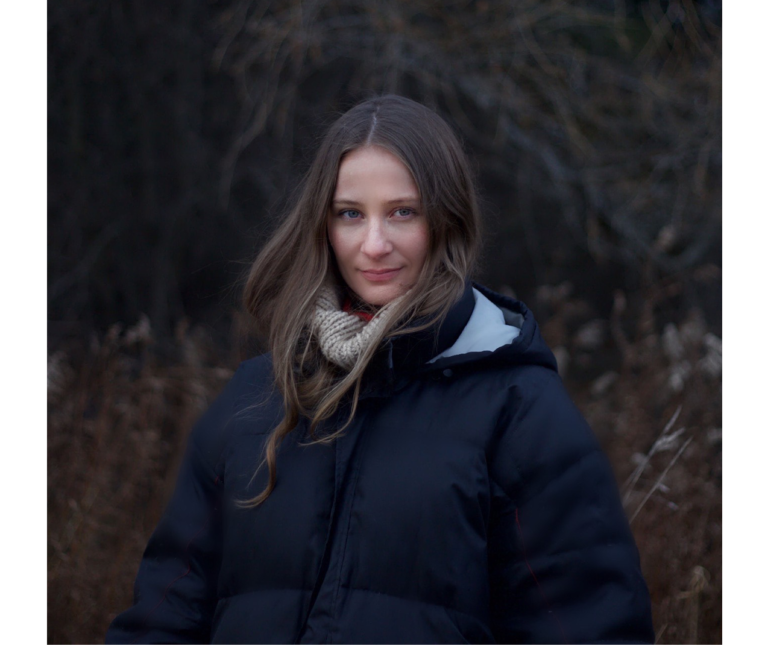Kara-Lis Coverdale’s ethereal, sample-based music is a product of her rigorous classical training as well as her interest in minimalism, ambient, computer music and the history of synthesis and sampling. Growing up in rural Ontario, she became the organist and music director at her Estonian church when she was just 14, and her interest in the technology of the pipe organ continues to inspire her experiments in blending electronic and acoustic elements. As well as several solo records on experimental labels like Umor Rex and Boomkat Editions, Coverdale’s catalogue includes collaborations with an Estonian choir, pop artist How To Dress Well and drone maestro Tim Hecker. Currently based in Montreal, her latest solo release is 2017’s Grafts, which blends glowing keys and modal improvisations with subtly shifting textures.
Making use of her own sample libraries, Coverdale’s sketch reveals some of the fundamentals of her practice. Opening with groaning, guttural pipe sounds, she manipulates her source with subtle use of EQ and delay, blurring the boundary between real and synthetic. Soft, drifting tones slowly gather momentum, fomenting into a heavy cloud of harmonics and splattered, flute-like phrases. Avoiding simple melodies or resolutions, Coverdale sets the scene for a deep and meditative piece.
NI products used: KONTAKT 6, FORM, SOLID EQ, REPLIKA XT.
Tell us about the Sketch – how did you create the organ sound?
In my sketch, I primarily used Kontakt as a way to create instruments out of the libraries I have been recording and collecting. Kontakt is a staple tool of mine because it allows me to play and isolate combinations in ways that would not be possible to do in real-time. The algorithm is faster than other samplers and I think the most unartifacted of the sampler instrument plugins I have used.
“I also used Form, which I like because I can load my own sample into the synth to give me more flexibility on the sound source. That is essential for a sonically specific project such as this one. However, it was difficult to tell what was being manipulated and how. I found I had to give in a bit to its own processual chaos, a submission I sort of enjoyed, theoretically. Then I shaped the sounds using the NI Solid EQ and the Replika XT, which I like for its sheen, brilliance, and granularization of the upper frequency range.”
What were you hoping to achieve with the sketch?
This sketch is an outline of a new Vox Humana pipe organ sample instrument I built. My goal was to make a first test of how some of those sonics may behave, how they could be arranged, how I may need to RX them, and get a sense of their emotive character. It’s very raw.
Do you have a favorite element?
I like to hear how some of the notes – which are stopped, so on/off by nature – are pulled through the dynamic envelope of the sampler to create the impression of the notes getting louder or softer. That’s really nice. It’s almost a breathing effect, which works well with the idea of the Vox Humana (“human voice”) and corrects the relative stasis of the original, so this iteration of the emulation is roughly a 3.0! I also like the bizarre, strolling and wonky riff in the beginning – it’s playful and vaguely Frankenstein or Addams Family. There’s the character Uncle Fester, which reminds me of the word “fester,” which is from the Latin word fistula, meaning pipe or reed. There are incredibly deep associative connections built into the mechanics of the organ.
What does sketching generally mean to you?
A sketch is an initial visualization or translation of a thing or idea as processed by your own hand. It’s a useful way to get a quick pulse on your understanding. A sketch is nice because it implies progress and change in a space where nothing is wrong – it frees you of the fear of the blank page.
And how do you go from that sketch to a finished track?
Usually it’s either about reduction or expansion. You can either isolate and amplify the best idea, or you can begin by removing that which is the least successful.
What’s the best production advice you’ve ever been given?
Don’t fill up the space of the mix just because you have it!
Lastly, could you share some of your favorite online learning resources?
For a quick answer there is always Gearslutz and the Rick Rubin Instagram account, and I usually look up tutorials based on the instrument or tool I am using. Sound On Sound has been a favorite and dependable resource for years. Paul White, the editor, is such a legend!
Words: Chal Ravens
















